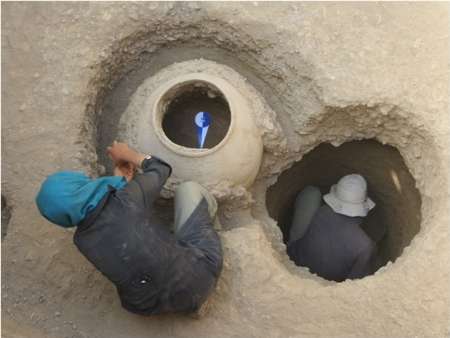The announcement was made by an official in charge of archeological operations in the historical site of Firouzeh Township in Razavi Khorasan Province northeast of Iran.
Commenting on the findings of the five-year archeological excavations, Head of the archeological team Hassan Basafa said the operations were focused on various burial methods in the southern part of the cemetery which had been unearthed in previous excavations.
He said the cemetery was the most important discovery in Firouzeh Township whereby valuable information was collected on ideological and ritual practices of people of Neyshabour in 4,500 years ago.
He pointed to various graves discovered in the cemetery such as no-tomb graves, pit graves, crock burial and secondary burial, adding that in one of the no-tomb graves two ceramic containers, one with no stand was discovered together with a big piece of coal.
The no-stand container was indicative of the tradition of using second-hand containers at that time examples of which are available in Central Asia as well.
According to Basafa, Firoueh Township is an important historical site of Bronze Age in Neyshabour and northeast of Iran which dates back to 2500 years before Christ (about 4,500 years ago).
The archeologist noted that Firouzeh Township used to be an industrial and administrative center at its time and with regard to the pottery baking furnaces, seals and tools discovered people of the township are expected to be specialists who traded with their neighborhood.
The historical site in Firouzeh Township, 5 km from northeast of the historical city of Neyshabour, was discovered during construction operations for housing units and currently archeologists are involved in research operations there.
NS**1394

Tehran, May 6, IRNA – A ceramic container with no stand which has been discovered in excavation operations in Firouzeh Township of Neyshabour region indicated that Iranians used second-hand containers some 4,500 years ago.

